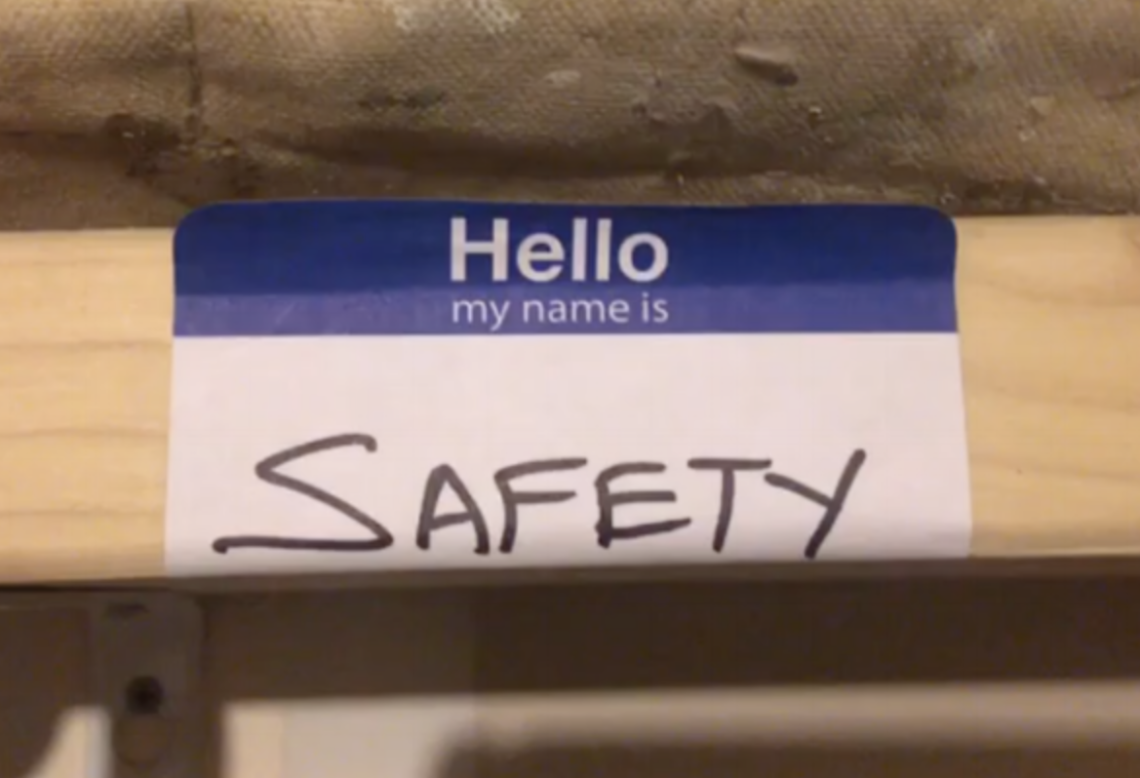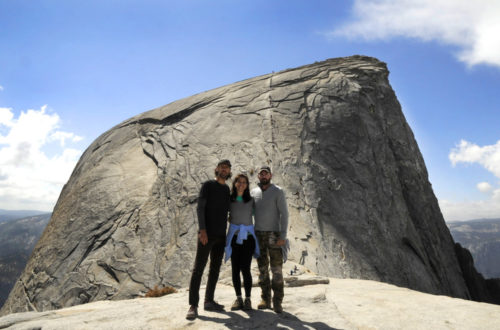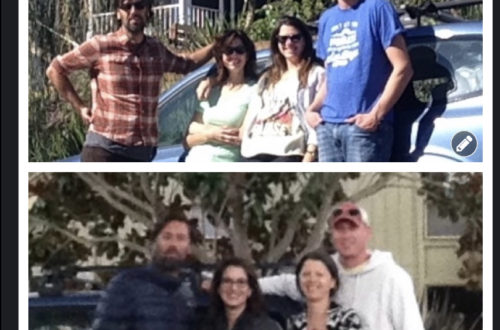
My Name is Safety
After experiencing Yosemite National Park, I am fascinated by the many ways that people die there. The book, Death in Yosemite by Michael Ghiglieri and Charles Farabee published in 2008, is a fascinating synopsis of what death in Yosemite means. In the name of the safety and for the education of those reading, here are the highlights:
WATERFALLS
People fall or wade into the water within 100 yards of the top of the falls and get swept over. Most catastrophes occur at Vernal or Nevada Fall, both along the Half Dome Trail.
Safety lesson: Never try to save anyone in the waterfall situation. It creates two fatalities. Rarely does it result in saving the victim. Throw them a rope, if possible.
SNOW
Most snow fatalities in Yosemite are from being snow-blinded (having your vision severely decreased by the intense light of reflected snow), getting lost, and then freezing to death.
Safety lesson: The best protection is sunglasses and, if you don’t have them, stay in one place or move to somewhere easily discoverable.
BASE JUMPING
BASE jumping is illegal in Yosemite. “BASE” is an acronym that stands for four categories of fixed objects from which one can jump: building, antenna, span, and earth. Six enthusiasts died since 1981, four jumped from El Capitan, two leapt from Half Dome. The most gruesome example was a woman in 1999 jumping off El Capitan who didn’t open her parachute because she couldn’t find the cord in her new equipment. When she hit the bottom, the ‘boom’ set off car alarms in the meadow approximately a quarter of a mile away.
Safety lesson: Don’t BASE jump.
FALLS WHILE SCRAMBLING AND HIKING
From 25% to 50% of Yosemite deaths are caused by leaving the trail to find a shortcut. The variance in the percentage is because of difficulty interpreting the thoughts of dead hikers. ALL were male and ALL were solo hikers.
One of the most deadly trails was the 1.75-mile descent from Glacier Point to the Yosemite Valley. This path is called the Ledge Trail and *looks* like you can shortcut it. The authorities initially blocked the short trail for descent and then closed it all together once a safer four-mile path was completed.
Five people died descending the Half Dome Cables, with two more dying on the sub-dome. Basically, they all fell off the side in some way. One person climbed the cables while the poles were folded down for the winter and slid to her death.
Of the scrambling fatalities, 93% were men with an average age of 24. 80% were between 10 and 29. Interestingly, these stats mirror a discussion Sean and James (both in their 40s) had on Half Dome, noting that the decision not to climb the cables in light of the approaching storm would have been much different in their younger years.
A particularly striking statistic was that before 1984, the average age of fatalities from falling while hiking was 22.4 years old. After 1984, that average age rose to 33 years old. The most interesting theory is that childhood obesity increased, causing fewer kids to be hiking, hence fewer kids dying. Other hypotheses are the increased popularity of video games, increased parent fixation on child safety, and increased wilderness awareness.
Safety lesson: NEVER leave the trail. NEVER solo hike and become, or at least think like, a woman.
FREAK ACCIDENTS AND ERRORS
Lightning: Part of the reason half dome is a magnet for lightning is that, at the highest point, there is a rusted twenty-four-inch jackhammer drill bit stuck in the rock from an attempt to place a sign there. They have since sawed the bit down to the base, but the metal is still embedded in the rock. Unknowingly, hikers hide under this boulder during storms. Lightning struck one man in the forehead and then he convulsed off the side.
Rockfalls: Since 1851, 400 rockfalls happened in Yosemite. Four ways they can happen:
1. Water in cracks freezes and expands
2. Water is simply a lubricant
3. Earthquakes
4. Erosion beneath the rocks
The worst one was in 1980 when a slab of granite that was 200×60 feet fell from above the switchbacks of the Yosemite Falls trail. Three people died. Nineteen were injured.
Freak Errors: In 2006, a man at Glacier Point dropped his camera onto a ledge fifteen feet below the overlook. He tried to retrieve it and fell the full 1600 feet to the Valley floor.
Safety lesson:
Don’t hike Half Dome when there is a storm nearby and don’t try to retrieve anything that falls over the edge.
CLIMBING WALLS
A total of 96 people died while climbing. Many deaths happened because the climbers belayed themselves to each other. One person falls and pulls both climbers down.
One usually adept rescuer, while attempting to save a stranded climber, was lowering himself off the top of El Cap and forgot to secure/knot/carabiner the end of his rope and simply slid off the end. He fell 2700 feet to his death.
Most of the climbing deaths were simple human error: unclipping from safety ropes, not having enough length of rope or not tying knots correctly. Twenty percent of climbing deaths were because unsecured bolts came out of the rock.
In 1988, one dramatic fall involved a guy using a metal, self-expanding safety device on the nose of El Cap six feet below the top. He felt the rock face move after he used the expanding device. He carefully got off that section and called to those below him to warn them. The next guy, ignoring the warnings, used his expanding anchoring device and broke off a ten-foot by four-foot piece of granite. The man was still on the face and they fell, embraced together, for 2000 feet.
Hypothermia is a common way of dying on the climbing walls. Oddly enough, no one has died from dehydration.
Safety lesson: Only rock climb where you can land safely on the ground.
DROWNING
Drowning trumps wall deaths. There were nine accidents from boating and eleven deaths from vehicles ending up in a body of water. Unfortunately, 144 people drowned in other ways, of which 23% were swimmers and 9% were fishing. Many hikers drowned trying to cross a stream. The average drowning victim was a 23-year-old male. All were based on a lack of understanding of the power of moving currents and underestimating the heat-suck of extremely cold water.
Safety lesson: Hiking solo greatly increases your chance of drowning. More commonly than not, the drowning person also caused the untrained rescuer to drown. If you are to be the rescuer, use every conceivable onshore technique for saving a swimmer. The memory tool is ‘reach-throw-row-go’, where ‘go’ is getting in the water but never within arms reach of the victim. Throw them a rope.
FAUNA AND FLORA
‘Yosemite’ translates to ‘grizzly bear’ in Miwok, the Indian language of the Yosemite Valley. Ironically, there are no more Grizzlies in Yosemite and there hasn’t been in all of California since the 1920s.
Neither a bear, a puma or a coyote have ever killed anyone in Yosemite. Most animal-related deaths have been from horses (six, thrown or kicked), snakes (one), spiders (two). Eight people died from trees falling on them.
Safety lesson: Fear falling trees, not bears.
LOST
There were five people who got lost, died and their bodies were found. There were 33 people who got lost and were never found. Eleven dead bodies were found but never identified.
A few people tried to get ‘lost’ in Yosemite to start a new life elsewhere. One man had a wife who was nine months pregnant. He went missing in Yosemite, causing a $22,000 manhunt. Police found him in Maine under a new name.
The most expensive manhunt was $450,000 for a random 51-year-old where neither the person nor any clues were ever found.
Safety lesson: Always carry a paper map and compass. Never rely on GPS. If you become lost, S-T-O-P: stop where you are, think hard, observe surroundings, plan. The plan may include staying put if you are in a discoverable location.
Before you leave:
1. Tell someone where you are going
2. And when you will be back.
3. Don’t hike alone.
4. Don’t go off trail.
SUICIDE
Since 1890, the year Yosemite National Park was established, there were a total of 60 suicides, of which 50 were men and 10 were women. Half occurred in a ‘scenic’ location. 25% made the leap from a famed cliff and 25% used a firearm. As a comparison, since it was built in 1937, 1300 people jumped off the Golden Gate Bridge.
The most common reason for suicide was that the man lost their woman. Men tend to jump off cliffs, hang themselves, poison themselves, slit their wrists, or use a firearm. Women generally take pills. Two-thirds of all Yosemite suicides were between ages 19-39.
Safety lesson: Don’t kill yourself.
HOMICIDE
The most disturbing story involved two mentally ill people in a dysfunctional relationship. He stabbed and killed her, then threw her off Glacier Point. Then he jumped.
There were 24 murders in Yosemite in 150 years, with 12 between 1963 and 1999. The victims after 1999 were mainly women, age 16-33, gratuitously murdered by “scumbag men” (the author’s words, not mine). Nationwide, this statistic is reversed. 80% of murder victims in the whole United States in recent decades were men.
Despite the disproportionate number of women victims in Yosemite, the actual number of homicides is equal to the Grand Canyon and Yellowstone. All three combined are far less dangerous than any sizable United States city. The national parks are some of the safest places in America.
Safety lesson: When in doubt, don’t trust anyone who hasn’t earned your trust. Rapists are twice as likely to be successful with compliant women. If you fight back, you significantly decrease your odds of injury and increase your odds of escape. When threatened, resist to the utmost. Do NOT do what they want you to.
Overall, nature demands that we pay attention. Don’t go unprepared.
There are people who want the parks to be ‘safe’. Obviously, this isn’t possible legally, morally, financially, or practically. The 1916 National Park Service Organic Act dictates that the NPS must leave the parks in their natural state. The onus is on us to take personal responsibility to prepare for natures challenges. Safety is the person’s responsibility, not the park’s. If we fail to respect its dangers, those dangers may hurt us. ‘Nature reciprocates neither our fascination nor our love for it.’


You May Also Like

Happy Birthday, Sean!
December 13, 2018
The Forty Percent Rule
January 27, 2018

2 Comments
Joshua Horn
Wow,,? Had no idea that so many have lost there life’s here at Yosemite! I’m a construction worker and working on glacier point. Glad to be here and to be part of such a amazing project and place. Thanks for the info
marhiggins
Thanks for commenting, Joshua. Thanks for the work you do! SO wonderful that you are getting to see Yosemite so intimately.